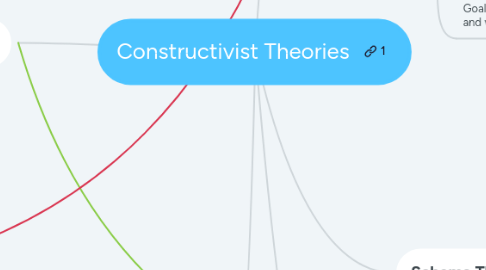
1. Transactional Theory
1.1. According to Rosenblatt (2013), "Every reading act is an event, or a transaction involving a particular reader and a particular pattern of sings, a text, and occurring at a particular time in a particular context" (p. 929).
1.1.1. Text can have multiple meanings to the different transactions that can happen between the reader and the text
1.2. Reader is active to their own emotions/images, processing the text, synthesizing, and images
1.3. The text should guide the reader to form own meaning
2. Engagement Theory
2.1. Intrinsically motivated to read and participate in metacognitive thinking.
2.1.1. Thinkings about your own thinking
2.2. 5 major components- Concept-Oriented Reading Instruction "CORI"
2.2.1. Themes
2.2.2. student choice
2.2.3. Hands-on activities
2.2.4. genres
2.2.5. social collaboration
2.2.6. Tracey and Morrow (2006) state, "CORI indicates that students involved with this program demonstrates increased motivation fro reading, increased use of metacognitive skills, and increase gains in conceptual knowledge" (p.65).
3. Critical Literacy Perspective
3.1. As Luke and Freebody (1997) explains, "There is no neutral position from which a text can be read or written" (p. 193).
3.1.1. Readers can understand ideologies how they please and can accept, reject, or reconstruct to their knowledge.
3.2. Luke and Freebody (1997) states to"Allow the individual to respond to works of literature at a personal level" (p. 190).
3.2.1. Reader focuses on interpretations of the text from their environmental and cultural experiences.
4. Schema Theory
4.1. Anderson (1984) describes that readers need to "Cut and fit a schema" for us to understand written text. (p. 469)
4.2. Anderson (1984) explains "Reading is conceived as an interactive process. As a person reads, an interpretation of what a segment of a text might mean is theorized to depend on analysis of the print and on hypothesis in the person's mind" (p. 473)
4.2.1. Bottoms up or data driven or top down or hypothesis driven.
4.3. Six functions of Schemata: Activating Prior knowledge, building prerequisite, interacting with knowledge, text structure, culture of students
4.4. Using Knowledge of the world and experiences to provide basis to comprehend, learning, and remembering ideas.
5. Psycholinguistic Theory
5.1. Use of Cueing systems when we read- syntactic, semantic, and graphophonic.
5.1.1. Syntactic: Grammar
5.1.2. Semantic: Meaning
5.1.3. Graphophonic: visual pattern
